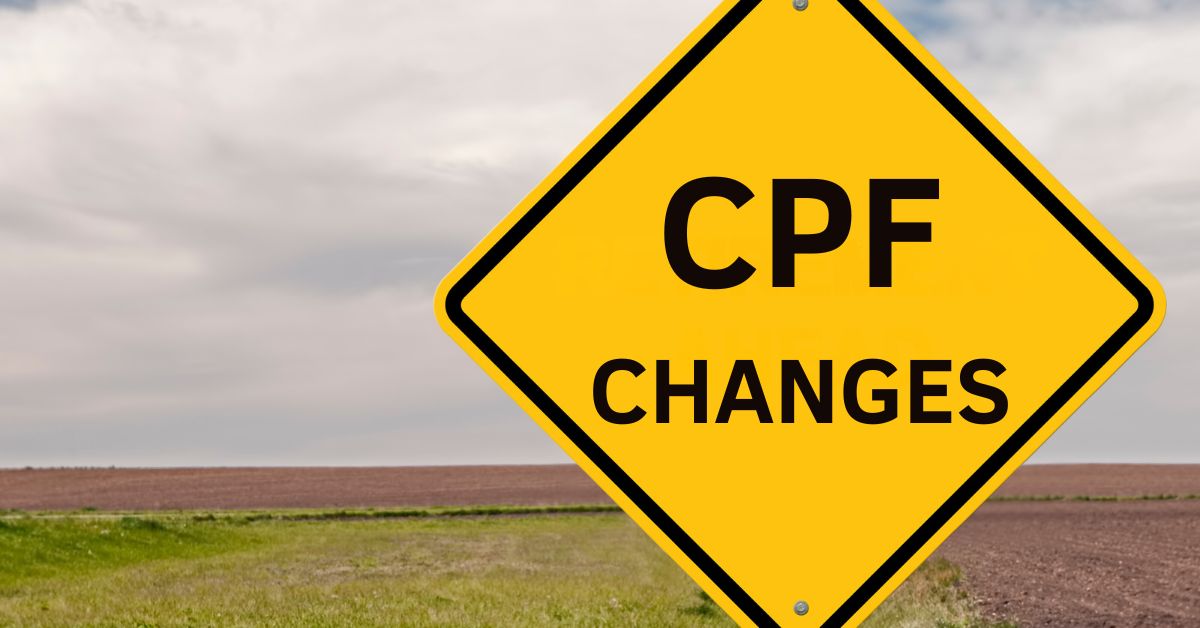
The first part of this two-part guide highlighted five ways an individual can maximize the benefits of Singapore’s national retirement scheme known as the Central Provident Fund, or CPF for short.
In my experience as a trainer with the Institute for Financial Literacy, the majority of individuals are not aware of these avenues, nor are they conversant with the benefits, which is a shame because CPF is consistently ranked among the best pension schemes in the world, and for good reason.
If you haven’t seen Part One of this two-part guide, do read that first. Here then are the next five things you should know.
6. You don’t have to sell your property to make Voluntary Housing Refunds
Most people know that if they sell their properties, they have to refund the amount that was used from their Ordinary Accounts (OA) to pay their housing loans, plus accrued interest, and that this money will be returned to their OAs.
Advertisement
What they may not know is why this requirement exists.
The amount is known as the property charge. If the property is sold, CPF requires the property charge to be refunded so that the member can set aside the Full Retirement Sum (FRS) at age 55 into his or her Retirement Account (RA), which this year is S$213,000 (the amount increases every year).
It is important to bear in mind that if the FRS is set aside, the member at 55 or above can withdraw all the remaining balance in his or her OA.
Now suppose someone at age 55 has managed to set aside the FRS and then sells his property.
If he refunds his property charge today to his OA, he can withdraw the entire amount tomorrow, in which case the need to refund the property charge should logically be cancelled.
Instead, the property charge is kept open so that members can make partial or full Voluntary Housing Refunds to their OA to take advantage of the 2.5% compound interest that the OA earns.
In the high interest rate environment seen 2-3 years ago, this may not seem attractive, but now that rates are heading lower, it’s certainly worth considering.
For those 55 and above and who have managed to set aside their FRS, this means the OA effectively becomes a sort of “flexible deposit account’’ as money deposited can be withdrawn any time.
Importantly, note that this can be done without selling the property. Note also that Voluntary Housing Refunds are possible for those below 55. More information on how you can go about making voluntary housing refunds can be found on CPF’s website.
7. After 55, you can track the increases in retirement sums if you wish

Suppose person A turns 55 this year and has set aside the FRS of S$213,000 in their RA. Over the next 10 years, this amount will grow to around S$319,400 based on the minimum interest of 4% per year.
If A then opts to start payments under the CPF Life Standard Plan, the S$319,400 will be used to pay an estimated S$1,610-S$1,730 per month for the rest of the person’s life.
However, note that top-ups into the RA are still possible after 55. In 2026, the FRS will be increased by about 3.5% to account for inflation to S$220,400.
Person A, who turned 55 this year, is then entitled to top-up his RA by the difference of S$7,400 next year.
In 2027, the FRS will be raised to S$228,200 and person A will be entitled to add an additional S$7,800 (S$228,200 – S$220,400) to his RA – and so on every year thereafter.
By tracking the increases in retirement sums, individuals can continue to add to their RAs, thus ensuring even higher payouts later.
In the example above, if person A managed to top-up his RA every year between 55 to 65, his RA balance would end up being much more than S$319,400. His payout will clearly be much higher than the estimated S$1,610-S$1,730 if without top-ups.
Note that these tracking top-ups can be done either with cash or by transfers from the OA. If cash is used, tax relief is available, subject to the limits laid out in Part One of this article. There is no tax relief for OA transfers.
Note also that you can perform the same tracking if you have set aside the Basic or Enhanced Retirement Sums.
8. Changing CPF Life plans once you’ve started receiving payouts

CPF Life is an annuity plan, which is an insurance product meant to protect you from outliving your savings. To buy into it, like all insurance products, you have to pay a premium, which in this case is the balance in your RA.
There are 3 plans to choose from when you reach the payout eligibility age of 65.
If you choose either the Standard or Escalating plan, your entire RA balance will be used to pay the premium, which means the whole amount enters an annuity pool with the RA balances of other members.
The premium or RA balance will be used to pay you a certain amount monthly until the balance is depleted, after which, the interest from the pool will pay you for the remainder of your years.
The third plan, known as the Basic Plan, is different because only 10% of your RA enters the pool when you indicate when you wish to start your payments, while the balance 90% remains in your RA.
It then functions the same as the other two plans – when the RA balance is depleted, the annuity portion then takes over.
Can you switch plans once you’ve joined CPF Life?
You can request to change your CPF Life plan type within 30 days from the date of your first policy letter.
A change of CPF Life plan type beyond the 30 days grace period is possible if
- You are on the Basic Plan and wish to change to the Escalating Plan or Standard Plan. This is because more money is entering the pool instead of leaving it, so other people’s payouts will not be adversely impacted.
- You wish to change from Standard to Escalating Plan since both require the entire RA balance to join the pool.
Also read:
Going Gaga Over CDC Vouchers: Of Groceries, Golden Pincers & Giving
Sylvia Toh Paik Choo considers the different ways that Singaporeans are using their CDC vouchers.
Journey Through Xinjiang: Exploring The Silk Road’s Revival, Ancient Cities, and China’s Stunning Landscapes
From the vast Gobi Desert to the snow-capped Tianshan Mountains, follow a journey across Xinjiang where the ancient Silk Road comes alive through breathtaking landscapes, timeless cities, and a vibrant mix of cultures at the crossroads of Asia.
9. You can still top-up your RA even after you’ve started receiving payouts
I know someone who postponed starting his CPF payments because he didn’t need the money until the latest possible age, which is 70.
Once the payments started and because he still doesn’t need the money, he deposits the funds back into his RA.
This is indeed possible, as I discovered when I received my CPF Life payout notification in August (yes, I’ve turned 65 and opted to start my payments).
In the policy document it is stated that:
"When you start your CPF Life monthly payouts, any subsequent new inflows to your Retirement Account (RA) will automatically be used to increase your CPF Life premium so that you will receive higher monthly payouts."
10. Perform top-ups in January
CPF members earn more interest if they perform top-ups in January instead of December.
For example, if you are below 55 and are looking to top up your SA, then note that DBS estimates a significant difference if the top-up is done at the start of the year rather than at the end.
Let’s assume you regularly top up your SA by S$2,000 a year for 10 years, a total sum of S$20,000. If the top-ups were done in January, the total interest earned at 4% a year over 20 years is S$16,800 versus S$15,500 if the topping up was done in December.





